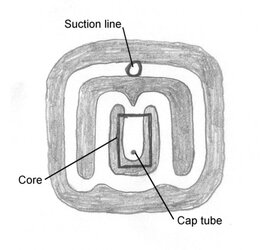- Joined
- Apr 1, 2004
- Location
- Vancouver Canada
I am hoping to make a direct die system this summer, and was looking at the design of the evaporator. I have a besic design in mind, but was hoping to optimize the base thickness and fin design. I can do this relativly easily using ANSYS, but I would need to know the convection heat transfer coefficient for the R290 in the evaporator. I have looked at trying to figure this out through massive equations and the like, but things get so complex and have so many variables that the only realistic way to figure this out would be empirically.
Does anyone have any approximate values from their own systems or have any idea whay sort of h I should use?
Does anyone have any approximate values from their own systems or have any idea whay sort of h I should use?
